'We're home': 140 years after forced exile, the Tonkawa reclaim a sacred part of Texas

GAUSE, Texas — Almost exactly 140 years after the Tonkawa were expelled from Texas, they have returned to purchase Sugarloaf Mountain, a sacred site located in Milam County, northeast of Austin, that plays a key role the tribe's creation story.
"We're home," Tonkawa President Russ Martin said at a small Dec. 12 ceremony honoring the recovery of 60 acres of the tribe's ancestral lands in Central Texas. "The first time I got to the top of the mountain, I was overwhelmed. I'm not that spiritual a person, but that experience was spiritual. We're glad to be home in Texas."
The purchase of the land for a historical park is part of a larger movement, especially among Texas tribes that were expelled — or nearly exterminated — during the 19th century, to reclaim their legacies here.
More: More on the subject: What happened to the Native Americans in Texas?
Sugarloaf Mountain is a high conical hill of red sandstone that overlooks the prairies and bottomlands of the Little and Brazos rivers, which flow together just downstream of the landmark.
On those floodplains, a large village of several cooperative tribes, which the Spanish called Ranchería Grande, became the one of the most populous spots in Texas during the 1700s. So dense was the Indigenous presence that the Spanish planted three short-lived missions in what is now Milam County.
To the Tonkawa, Sugarloaf was known as Red Mountain, or “Natan Samox” in the Tonkawa language. According to one historian, the Spanish called it Turtle Mountain, or "La Tortuga."
It was a sentinel marker for the Spanish traveling along the braided Camino Real de los Tejas, which followed trails blazed by Native Americans from the Rio Grande to northwestern Louisiana.
In 1884, the Tonkawa, once called "the best friends of the Texans," were removed from Fort Griffin in northwestern Texas to first one and then another reservation in Oklahoma as part of their own "Trail of Tears." They had been moved previously in 1855 and 1859.
By the late 20th century, it was rumored that the Tonkawa had disappeared altogether.
They had not. Although their numbers dwindled for a time, the tribe of 950 citizens now operates a reservation as well as a casino, hotel, food court, movie theater, bowling alley and steakhouse in the town of Tonkawa, located on the Salt Fork of the Arkansas River near the Oklahoma-Kansas border.
'It was our Garden of Eden'
Earlier on Dec. 12, the Herzog family, who have owned Sugarloaf since the 1990s, gathered with three Tonkawa leaders at their home, which offers a magnificent view of the mountain. Official papers changed hands. The 60-acre footprint of the mountain went for what was called a "reasonable market value."
In the near future, the nonprofit El Camino Real de los Tejas National Historic Trail Association will manage the land and its improvements. First will come research and archaeology, and then a new park will offer the public daily access to the mountain, along with interpretative displays and educational activities.
For the Tonkawa's return to Texas, the linchpin of this project was Don Patterson, the tribe's former president and still its unofficial historian. He is also a leading teacher of the Tonkawa language.
It was Patterson, 85, who rediscovered the Indigenous legacy of Red Mountain in the 1980s.
"It was our Garden of Eden," Patterson said. "Our Wolf Dance ceremony depicts the first Tonkawa human coming out of the foot of Red Mountain."
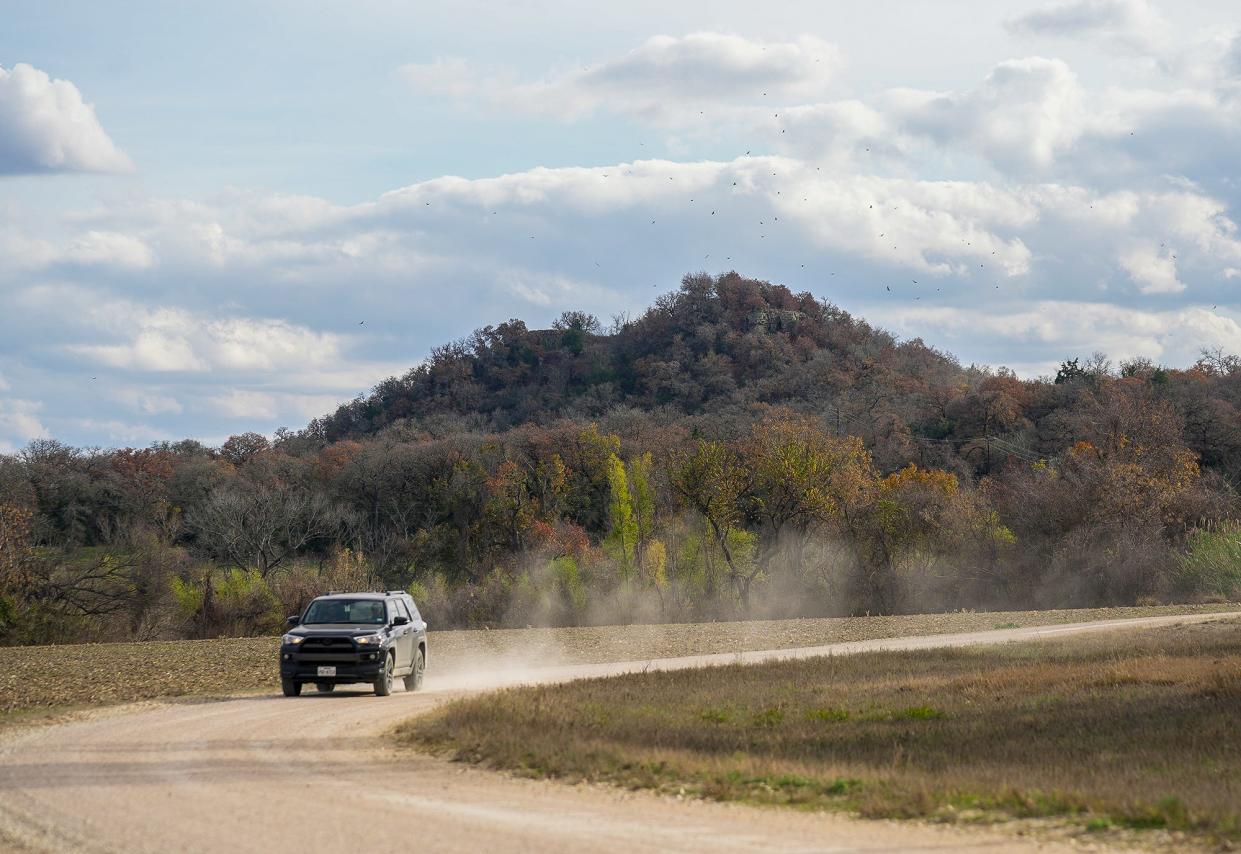
The Tonkawa shared Central Texas with others
Before the 1880s, the Indigenous presence in this area had endured for millennia. Recent artifacts unearthed at the Gault Site, on the border of Williamson and Bell counties, indicate that Indigenous people have lived in Central Texas for perhaps 20,000 years. Moreover, DNA evidence suggests that the Native Americans that the Spanish encountered here in the 1500s were direct descendants of those Paleo-Americans.
More: More on the subject: We turn the clock back 20,000 years at the Gault Site in Central Texas
Among the major Indigenous Texas tribes, the the hunter-gatherer Tonkawa, known as fierce warriors, wintered mostly east of the Balcones Fault. To the south were the Coahuiltecan; to the east, Caddo, Atakapa and Karankawa; to the west, Lipan Apache and, later, Comanche; to the north, Wichita and Kiowa. In the early 19th century, these tribes were joined by Cherokee and other immigrants escaping oppression in the rapidly expanding United States.
The Tonkawa shared the land with other tribes, as indicated by the growth of Ranchería Grande. Although their language is an isolate, that is, not related directly to other Native American tongues, they became adept at making cross-cultural contacts, a useful skill to have after the Europeans arrived.
More: More on the subject: Rancheria Grande was the big city back in the 1700s
Early on, the Spanish mostly ignored Texas, which promised little in the way of precious metals or large groups of potential enforced laborers. They planted a string of missions and presidios in Texas during the 1600s and 1700s to counter the threat of a possible French incursion from Louisiana.
After the three local Spanish missions failed, the land around Red Mountain became part of the Spanish land grant obtained by José Antonio Ruiz. Born into a well-connected San Antonio family, Ruiz became an attorney, teacher, author, public servant, diplomat, trader and military leader. Along with his nephew, José Antonio Navarro, he was one of the two native Texans to sign the Texas Declaration of Independence.
Ruiz learned how to speak Comanche and Cherokee fluently. He spoke without an interpreter to other Native Americans as well. He eventually wrote what scholars consider the most reliable book about the Native Americans of Texas of the early 19th century.
More: More on the subject: José Francisco Ruiz is the 'Tejano Patriot' you don't know
Once the Anglo-Americans, often with enslaved African Americans in tow, showed up in great numbers during the 1820s and '30s, nearby Old Nashville, also known as Nashville-on-the-Brazos, became a trading post for the Robertson Colony and a stopping-off point for settlers headed west.
For his part, Ruiz commanded Fort Tenoxtitlán, a lonely outpost constructed in 1830 for Mexican forces. Located not far from the mountain in what is now northeastern Burleson County, it was part of a chain of garrisons intended to stop or at least slow immigration from the United States. Instead, Ruiz befriended American colonizer Stephen F. Austin and, along with other Tejanos, joined the new "Texians" in a revolt against the central government in Mexico City.
"Tennessee and Mississippi planters dominated the Brazos Valley," said Dave Cunningham, a longtime neighbor of the Herzogs, local historian and the real estate agent who has spent 30 years trying to save Sugarloaf Mountain, at first as a possible state park. "There were Polish immigrants over in Bremond, and Czechs in Cameron. Germans, not so much."
The backroads around Gause are marked with old Black churches, centers of the freedom colonies established by independent, land-owning African Americans after emancipation.
What happened to "best friends of the Texans"?
During the mid-19th century, the Tonkawa served as guides for newcomers, mostly Anglo, with whom they allied against the Comanches who raided from the west. Yet as settlements grew into towns, and towns into cities, the Tonkawa were treated as quaint holdovers from an earlier era. The federal government gathered them along the upper forks of the Brazos River, far from their Central Texas homes, and then forced them to migrate to Oklahoma in 1884.
More: More on the subject: Changing faces of the Tonkawa tribe
In his widely read and reprinted 1961 book, "The Indians of Texas: From Prehistoric to Modern Times," W. W. Newcomb Jr., a scholar at the University of Texas, suggested that the Tonkawa were virtually extinct.
"Newcomb had never seen a Tonkawa in his whole life," Patterson huffed. "He just cared about what he found in books."
Tribal president Martin acknowledges that the Tonkawa in Oklahoma had once dwindled to some 50 citizens, according to federal records. Most of today's tribe is young and disconnected from memories of long-ago Tonkawa life in Texas.
"We are in the process of teaching the language," Patterson said. "When European immigrants came here, they had a strong sense of their traditional cultures. Some of our children and grandchildren have lost the traditional sense of our being. We are doing our best to hang onto our traditions and culture. It's a battle."
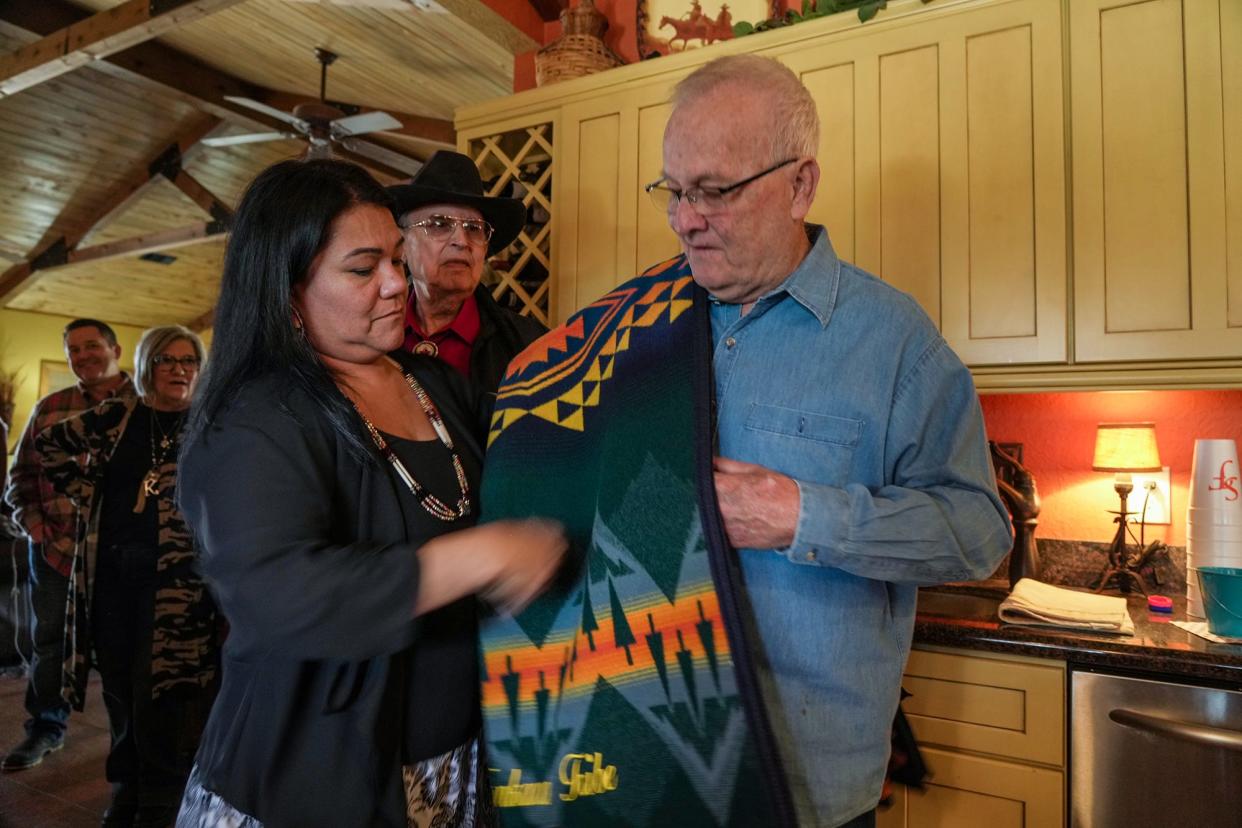
The Herzog family sell to the right buyers
On this sunny December day, it was all smiles at the Herzog house.
The land deal was closed by the swimming pool in sight of Sugarloaf Mountain. Then everyone moved inside for a lunch of enchiladas and Texas sheet cake with iced tea.
Leon and Kay Herzog still own the house and the land immediately around it, which rises on the other side of a steep valley from Sugarloaf Mountain. All along, they knew that the landmark, although on private land, was a magnet for the curious, who arrived almost daily.
"We've had it since the 1990s," said Leon and Kay's daughter, Kim Herzog-Dussling, who lives in Cypress. "We'd walk through the woods, and it would just open up."
The Herzog family, it turns out, had forged a link to the mountain long before they owned the land, when their ancestors lived in the small farming towns not far away.
"Grandma would hang out at Sugarloaf when she was a kid," Kim Herzog said of Minnie Lee Bell. "She lived to 102 and just recently died."
"My mother visited the mountain on her senior high school trip," Kay Herzog, Kim's mother, said of Bell. "When we brought her up here after we bought the land, she couldn't take it in. We love it and look at it every day. We take care of it and pick up trash. People ask for permission to get engaged there, or to get married there, or to spread ashes there."
After lunch at the Herzog house, the tribal leaders presented ceremonial gifts to Leon Herzog and Dave Cunningham, the "landman who protected the mountain for 30 years."
"In the past, we gave horses away. Now it's Pendleton blankets," Patterson said of the Oregon company that sells Native American woolen blankets, including this day's gifts, which bear the Tonkawa seal.
Of the sale, Kay Herzog said: "It was the right thing to do."
"I've been coming out here all my life," said granddaughter Heidi Herzog, who lives in Houston, "since before the house was built. It's just amazing that we are able to hand the mountain back to them."
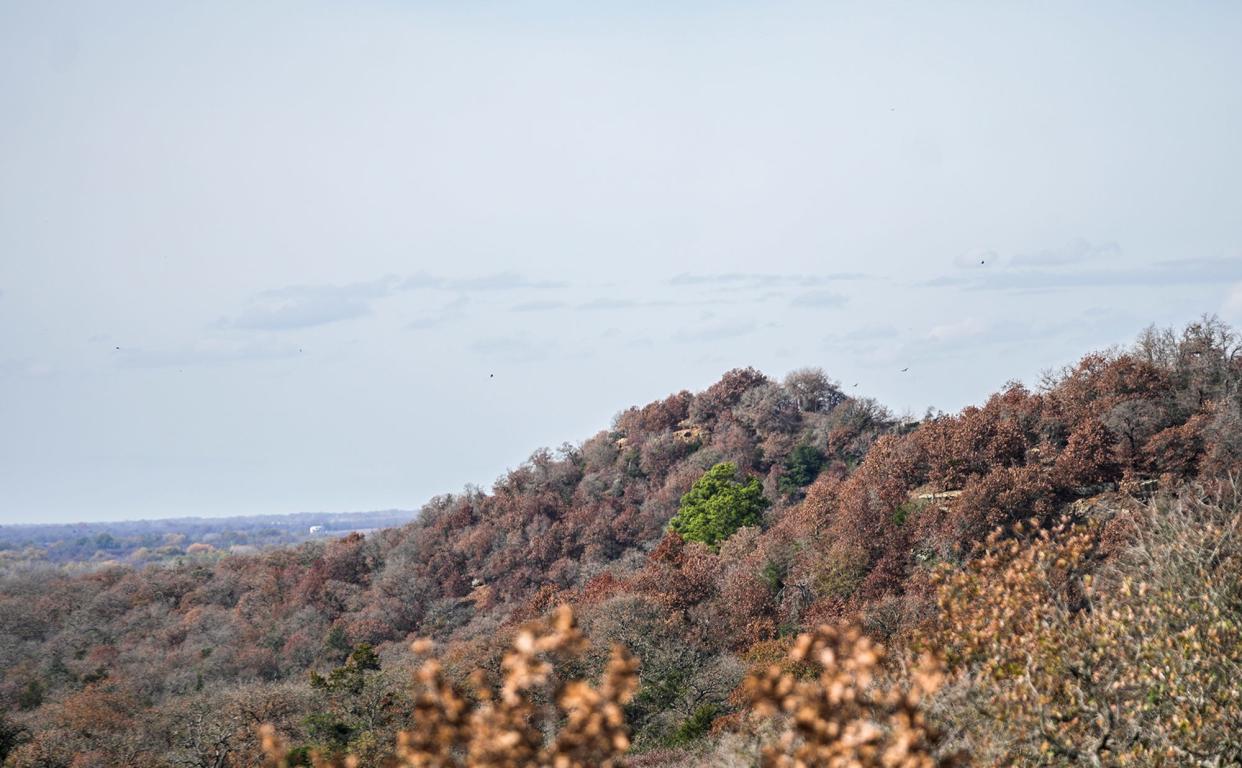
What part is played by El Camino Real de los Tejas?
Steven Gonzales, the soft-spoken but indefatigable director of the nonprofit El Camino Real de los Tejas National Historic Trail Association, became an essential envoy during the Sugarloaf Mountain exchange.
His group has worked tirelessly to promote the historic trail. To block French expansion from Louisiana, the Spanish had planted presidios and missions along this royal road named for the tribe that lent its name to Texas.
More: More on the subject: Steven Gonzales wants to put you on the Camino Real de los Tejas
The Camino Real is not a solitary road, but a braided trail woven across the faces of South, Central and East Texas, as well as northwestern Louisiana. It was named a national historic trail by an act of Congress in 2004.
“There are many layers of history to the road,” Gonzales told the American-Statesman in 2015. “From Native American to French, Spanish, Anglo and beyond. As a matter of fact, the road led to the founding of Texas. And it’s easy to say that we would not be calling Texas ‘Texas’ without it.”
More: More on the subject: Stop! Leave that Texas artifact exactly where you found it
More than one thread of the Camino Real led through what is now Milam County. An active local chapter of the Gonzales' group, known as the Ranchería Grande Chapter, has has helped with developments in the region, such as roadway signs, for many years.
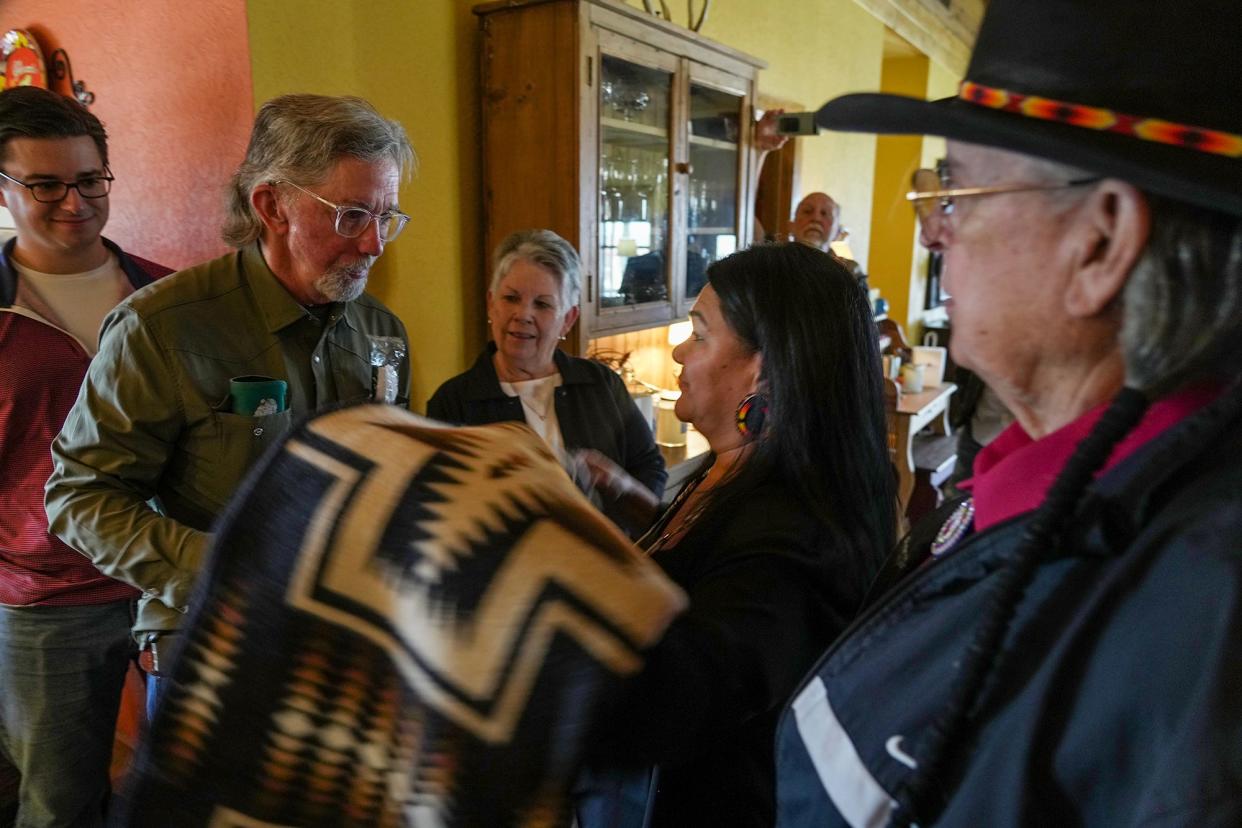
The volunteers expressed intense interest in Sugarloaf Mountain.
"In mid-2023, our group entered into a lease with Herzogs with an option to buy the 60-acre site," Gonzales says. But after speaking with the Tonkawa and learning of their desire to buy it, his group stepped aside and allowed them to do so. "We will manage the site for them and help make it publicly accessible in the coming years. This is a great opportunity for the tribe, trail and association."
Many of the same volunteers had saved the old metal and wooden bridge over the Little River where the public ceremony honoring Sugarloaf Mountain exchange took place.
One of those landowners has already invited researchers onto her land, where they found the remains of a Native American village and remnants of the Camino Real. Her family and a neighboring one have cleared a two-mile trail, and created a trailhead and parking lot. The backers will hold a grand opening of this small trail for the public on Oct. 19, 2024.
'Where it all began': How the Tonkawa reclaimed the mountain
"Who buys a mountain?" Patterson quipped at the public ceremony. "The Tonkawa tribe does."
Then Patterson turned more serious.
"All day, people have asked me what today means to me," he said. "It means to me: 'Where it all began.'"
During the 1980s, Patterson used ancient stories as a guide, which he cross-referenced with materials in Spanish-language archives. When he visited the area for the first time, he heard locals talk of a red mountain. Standing at the foot of the rise, however, he couldn't see it for the heavy woods. He drove out a quarter of a mile into a field, looked back around, and there it was.
Since then, Patterson has led the Tonkawa back to Texas for ceremonies, including an occasional enactment of the seminal Wolf Dance.
When the chance came to buy the site and establish an ongoing presence in their ancestral Texas lands, the tribe did not hesitate.
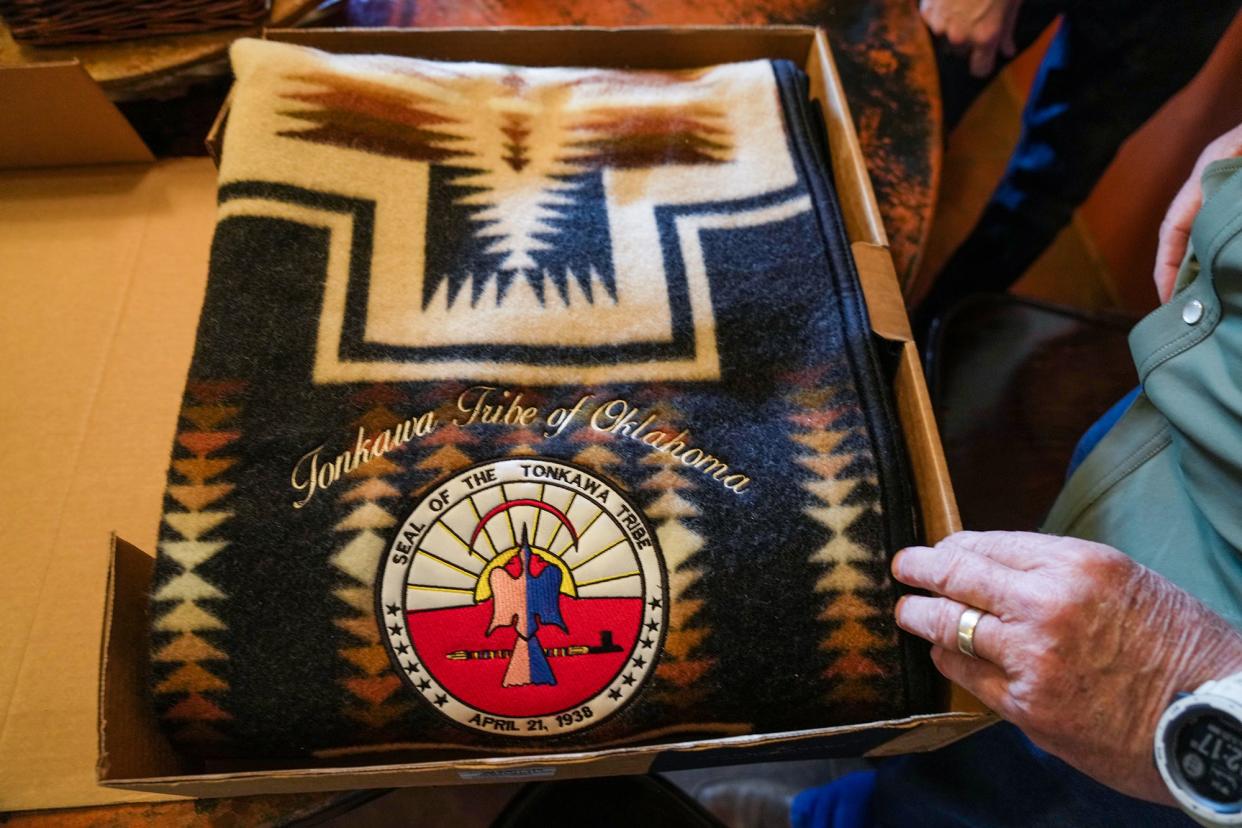
"The vote was unanimous," Martin said. "We brought Don in to talk about it. He had everybody crying. We voted for it 100 percent."
What will you see when the park opens?
"This is a day of convergence in a place of convergence," Cunningham said at the public ceremony. "The rivers and trails met here for more than 10,000 years. Cultures and family histories converge here. Now we can say: 'We saved Sugarloaf.'"
Because of the efforts of the nonprofit along with tribal members, historians and local landowners, Sugarloaf, perhaps more properly, Red Mountain, will become a historical park, one of the few in Texas devoted to the Indigenous people who lived here for so long.
"In our tribe, we have a teaching," Patterson said at the public ceremony. "When somebody does something good to you, you do something good for them."
Bob O'Dell, producer of the upcoming documentary film "Tonkawa: They All Stay Together" — which is expected to be released in about a year — emphasized the ongoing social ties that these projects have brought to Texans and the Tonkawa.
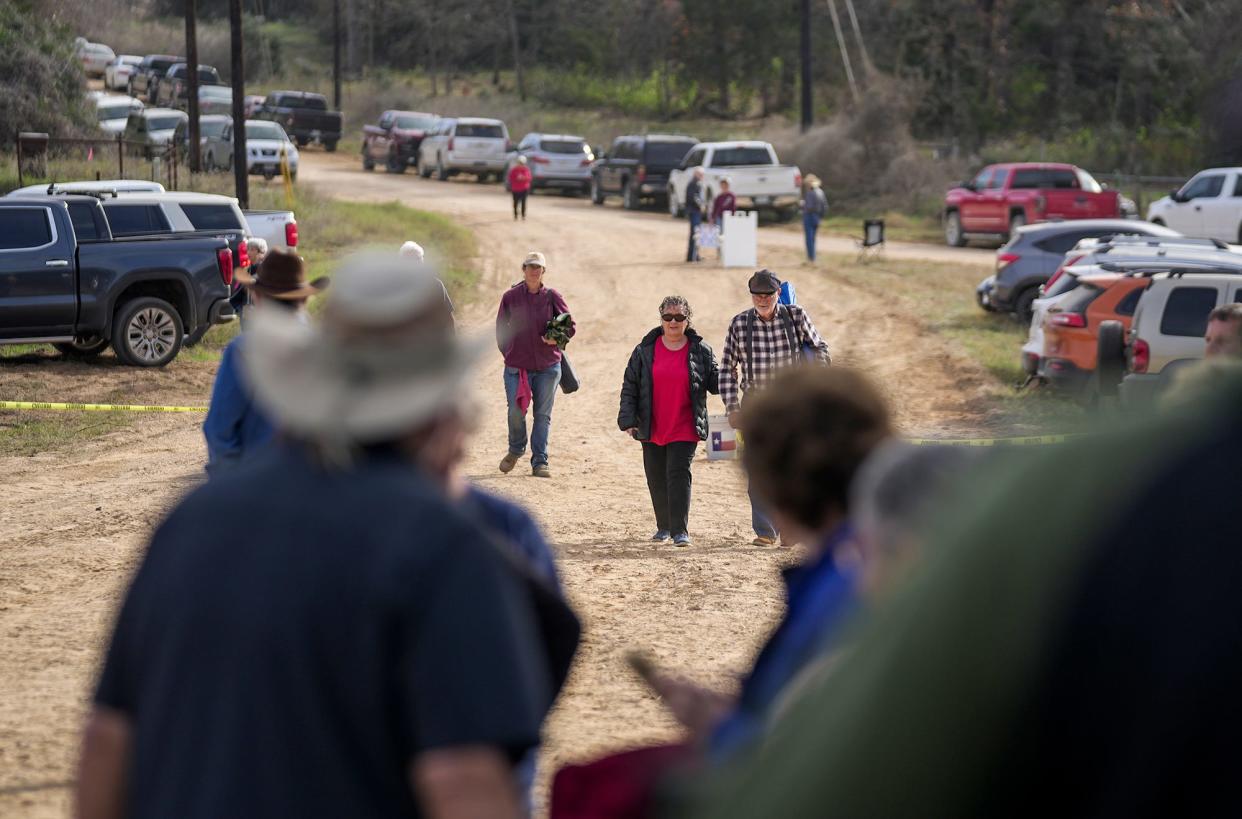
"Remember that your friendship with the tribe is more important than your project with the tribe," O'Dell said. "You will be changed in the process. A single friendship can change the world."
When will the public see the park? The National Park Service is involved, and several designers have already presented concepts.
"I will take us several years," Gonzales said. "It's going to take a lot to bring it out of the rough. But Milam County residents have been working for years to arrive at this point."
Nothing will completely heal the way the Texans broke with their Tonkawa friends in the 1880s, but the Dec. 12 ceremony opened a new chapter of mutual respect and understanding.
"As a child, a long time ago, I heard about the mountain," said Racheal Starr, secretary-treasurer of the tribe. "Now that it's been brought back, I know more. I knew it was something special, but in just the last six months, I've learned what it really means.
"It makes me want to learn more."
This article originally appeared on Austin American-Statesman: Sugarloaf Mountain given back to Tonkawa tribe after 140 years
